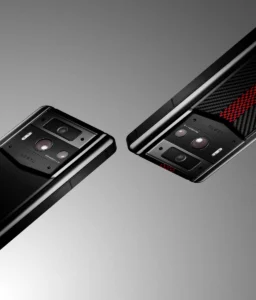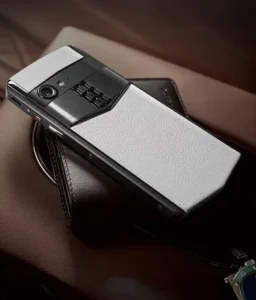
Military satellite phones are very important for military people. They help people talk in any place. These phones use encryption and satellite networks to keep calls safe. They work even if cell towers do not work in emergencies.
-
Military satellite phones let troops and emergency workers talk right away. This helps keep everyone safe and helps missions go well.
-
They are safer than regular cell phones. They are more reliable and do not need working cell towers.
-
Military teams use these phones to talk fast and safely. They use them during military missions, disaster help, and emergencies.
Key Takeaways
-
Military satellite phones talk to satellites in space. This lets people talk anywhere on Earth. They do not need cell towers.
-
These phones use strong codes to keep calls secret. They also check who is calling to stop strangers from listening.
-
Military satellite phones are made to be very tough. They can get wet, dropped, or dirty and still work. This helps in emergencies.
-
Special technology stops other signals from messing up calls. This keeps calls clear, even if someone tries to block them.
-
Military satellite phones work all over the world. They give fast and safe ways to talk. This is important for missions, disasters, and rescues.
How Military Satellite Phones Work
Satellite Network Connection
A military satellite phone talks straight to satellites in space. It does not need cell towers or ground networks. The phone sends a signal up to a satellite. The satellite acts like a middle helper. It sends the signal down to a ground station. This way, people can talk almost anywhere on Earth. It works even in faraway or dangerous places.
The signal path uses some important parts:
-
Satellite modem: Changes data for the satellite link.
-
Antenna: Made to keep a strong signal with satellites.
-
Microcontroller: Controls how the phone talks to its parts.
-
Power supply: Keeps the phone working, often with batteries.
-
Enclosure: Protects the phone and makes it very tough.
Satellites use smart ways to handle many calls at once. They use frequency division, time division, and code division. The ground station has big antennas and strong electronics. It helps send and get signals. This setup keeps calls clear and safe, even with many users. Military teams trust this system for good and wide coverage.
Device Design and Portability
Military satellite phones are made to be very tough. They can survive hard places like deserts, mountains, or battlefields. The strong build makes them shockproof, dustproof, and waterproof. This keeps the phone working in rough spots.
Some phones, like the Iridium Extreme, have special safety features. They have SOS buttons and GPS tracking. Users can send help signals with their location. This is very important if they are alone. Push-to-Talk lets groups talk fast, which helps teams work together.
These phones are still easy to carry. Soldiers can take them on missions. The mix of world coverage, strong signals, and tough build makes them key for the military. They work well when other phones might not.
Secure Communication Features

Encrypted Communication Channels
Military satellite phones use strong encryption to keep things private. Encryption turns messages into secret codes. Only people with the right key can read them. This stops others from stealing or changing messages. Military phones use NSA Type 1 encryption, not weak commercial ones. Devices like the L3Harris MCU-110C have special chips and algorithms. These include AES-256, Carousel, and Pegasus. They let users update keys over the air. This means you do not need new devices to stay safe. The Mobile User Objective System (MUOS) also uses NSA Type 1 encryption. This keeps voice and data safe, even far away.
Military satellite phones follow strict security rules. They use certified devices like Viasat’s In-line Network Encryptor. These work in space and on the ground. They protect both secret and normal information. NATO and other groups trust these systems. Programmable cryptographic devices can get quick updates. This helps fight new threats fast. It keeps military teams’ communication safe everywhere.
Note: Encryption is not enough to stop every threat. Military systems add more layers for safety. These include nuclear hardening and onboard signal processing. These help stop jamming and eavesdropping. Wide bandwidth and directional antennas make spying harder. All these tools work together to protect communication.
Authentication and Access Control
Authentication checks that only the right people use these phones. Many methods help control who gets access. Some phones use cryptography-based protocols like elliptic curve cryptography (ECC). These use public and private keys, digital signatures, and smart cards. Others use Authentication and Key Agreement (AKA) protocols. These come from mobile networks and use unique IDs and challenge-response steps. Hardware-based methods add more safety. Devices may have special chips or physical unclonable functions (PUFs) to prove who they are.
|
Description |
Key Features and Mechanisms |
Verification Methods and Examples |
|
|---|---|---|---|
|
Cryptography-based (ECC) |
Uses elliptic curve cryptography for terminal identity verification and encrypted communication. |
Public-private key pairs, digital signatures, session key generation, smart card registration, group key negotiation. |
Informal and formal security analyses; protocols by Altaf et al. and Liu et al. |
|
AKA Protocol |
Adapted from mobile networks for mutual authentication and session key generation. |
Unique terminal identifiers, long-term keys, authentication vectors, challenge-response mechanism. |
Simulation and emulation experiments; improved AKMA framework for decentralized continuous authentication. |
|
Physical Hardware-based Methods |
Uses unique hardware identifiers and security chips for device authentication. |
Hardware-generated keys, signature verification, PUF-based identity recognition, handover authentication protocols. |
Formal verification using tools like Scyther, AVISPA, BAN-Logic, Mao Boyd Logic; FPGA circuit modeling tests. |
|
General SatCom Security Process |
Registration with authentication server, key assignment, encrypted authentication data packets, session key distribution. |
Multi-step process involving encryption/decryption of identification info, forwarding via satellites, and session key usage. |
Standard security authentication flow ensuring only legitimate users access the satellite communication. |
These steps make sure only trusted users can talk on the system. They help stop hackers from getting in. Authentication and access control are very important. They help teams talk quickly in faraway or dangerous places.
Anti-Jamming Capabilities
Jamming is a big problem for military satellite phones. Attackers try to block or mess up signals. Military phones use many tools to stop this. Frequency-hopping spread spectrum changes the signal’s frequency a lot. This makes it hard for enemies to jam the signal. Directional high-gain antennas send the signal in one direction. This cuts down on interference and jamming. Some phones use the Extremely High Frequency (EHF) band. This band has less interference.
Military satellites can talk to each other with cross-links. These links send data between satellites, not just to the ground. This keeps communication safe from jamming and spying. Real-time monitoring tools watch for jamming or spoofing. If there is a problem, the system can switch frequencies or routes. This keeps the connection working.
-
Anti-jamming features include:
-
Frequency-hopping spread spectrum
-
Directional antennas
-
EHF band operation
-
Satellite cross-links
-
Real-time monitoring and rapid response
-
These anti-jamming tools help military teams keep talking safely. They work even during electronic warfare. They protect instant communication in tough places. Military satellite phones also use many defense layers. These include intrusion detection, constant monitoring, and quick action against attacks. This keeps communication safe and working, no matter what happens.
Real-World Military Applications
Global Coverage and Redundancy
Military satellite phones work almost everywhere on Earth. They help people talk in emergencies and keep messages safe. These phones use many satellites in different orbits. Some are high up, and some are closer to Earth. This lets teams switch between satellites and cell networks. It helps them stay connected in far or dangerous places. High-Throughput Satellites make data move faster. Software-defined satellites can change to fit the mission. Satellites can talk to each other in space. This means they do not always need ground stations. It makes the system more reliable.
-
Military satellite phones can:
-
Switch between satellites and cell networks easily
-
Use backup paths for emergencies
-
Use strong anti-jamming and encryption for safety
-
Use multi-band terminals to lower interference
-
Use hybrid SATCOM systems to save money in emergencies
-
This setup gives worldwide coverage and strong connections. It helps teams work together during missions, emergencies, and quick response times.
Protecting Sensitive Information
Military satellite phones keep important information safe. They use strong encryption so no one can listen in. The phones are tough and hard to break into. Faraday bags block signals from getting in or out. This stops GPS tracking and hacking. The bags also protect phones from EMP attacks. They keep devices safe during practice drills for emergencies.
Military teams follow strict rules to keep calls safe. They use multi-factor authentication and air gapping. These steps help keep secrets safe, even in risky places.
Reliability in Challenging Environments
Military satellite phones must work well in tough places. Phones like the Iridium Extreme are very strong. They work in very hot or cold weather. The phones are waterproof, dustproof, and shockproof. This means they keep working in hard conditions. Emergency features like SOS buttons and GPS help teams in trouble.
|
Feature |
Description |
|---|---|
|
Military-grade durability |
Waterproof, dustproof, and shockproof for emergencies |
|
Temperature tolerance |
Works from -10°C to +55°C, so it works almost anywhere |
|
Battery life |
Stays on for 30 hours and talks for over 4 hours |
|
Emergency features |
SOS button and GPS tracking help in emergencies |
|
Field repair capability |
Antennas can be replaced by users in the field |
|
Network architecture |
66 satellites link together for strong, worldwide coverage |
Military satellite phones keep working even in faraway or dangerous places. They help teams stay in touch, prepare for emergencies, and keep messages safe all over the world.
Military satellite phones help teams talk safely in any emergency. They work in far places and during disasters. Teams use them for rescue, missions, and practice drills. These phones always work, even in hard times like search and rescue or border work.
Being ready for emergencies needs safe ways to talk. Military satellite phones help leaders give orders and keep data safe. They make sure teams can talk to each other. Their strong build and smart features make them very important for all emergencies and military jobs.
|
Mission Type |
Impact on Emergency Preparedness and Reliability |
|---|---|
|
Search and Rescue |
Helped teams act fast and stay safe |
|
Disaster Response |
Gave long battery life and tough design for emergencies |
|
Border Security |
Made emergency talking better and more reliable |
FAQ
How do military satellite phones keep conversations private?
Military satellite phones use strong encryption to protect calls. Encryption turns messages into secret codes. Only people with the right key can read them. This stops hackers and spies from listening in.
Can military satellite phones work during natural disasters?
Yes, these phones talk straight to satellites in space. They do not need cell towers or ground wires. Teams can still talk if storms, earthquakes, or floods break local networks.
What makes military satellite phones different from regular cell phones?
Military satellite phones can work almost anywhere on Earth. They are made with strong materials and have special security tools. Regular cell phones need cell towers and do not have as much protection.
Who uses military satellite phones?
|
User Type |
Example Use |
|---|---|
|
Soldiers |
Talking on the battlefield |
|
Rescue teams |
Helping during disasters |
|
Government agents |
Sharing secret information |
Many groups use these phones to stay safe and connected in risky places.







